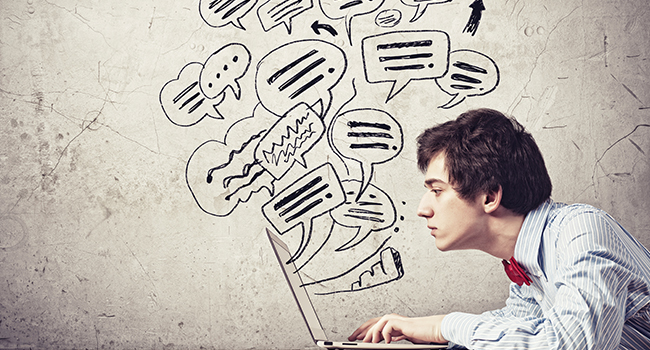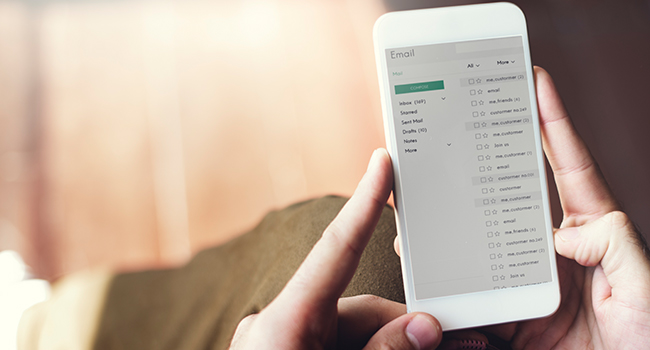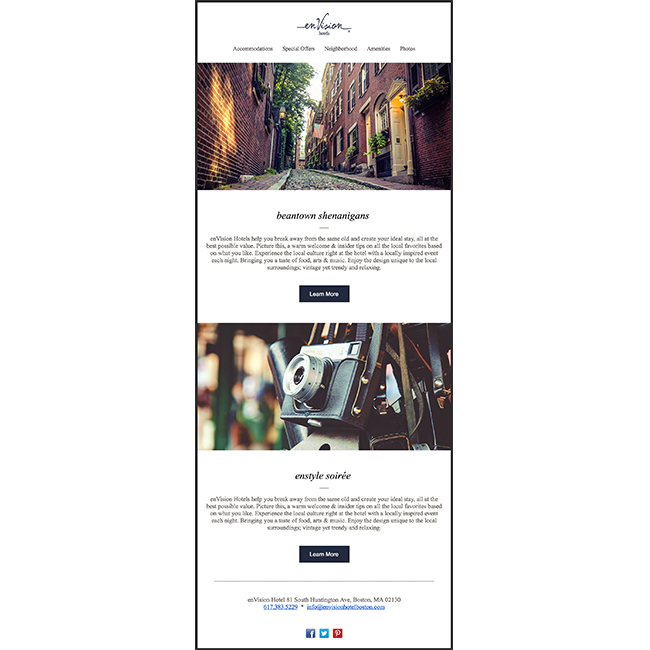Step 1: Make it Mean Something “UGH, another email?” Do you ever feel like that? Well sometimes, so do your subscribers. According to a 2015 study by a marketing research firm the average number of business emails sent and received by a person was 122 a day, so how does yours differ?
Are you just sending an email to send an email and remind your subscribers that you’re there? If your email doesn’t have a good, engaging purpose then the user may need more clarity as to why they even signed up in the first place. For example: if you are trying to entice viewers to book during summer months, paint a mental picture for them. Let them imagine themselves poolside with a cocktail in hand after a long day of golf, spa treatments, or shopping.
Additionally, incentives are a good method to keep a subscribed user from quickly scrolling to the unsubscribe button. If you are pushing for summer stays, you may sweeten the pot with offers ONLY available through email or social. For example: “Receive a free appetizer with your poolside cocktail!” This sense of urgency or exclusivity will call to your users to stay engaged and build loyalty. Rewarding loyal subscribers from time to time is a great way to maintain engagement.
Step 2: Learn Why CTAs and Subject Lines Are The Bee’s Knees Half the battle is getting the user to open the email. Keep a subject line that’s clear and true to your brand voice; however if the subject is too dry, it will receive less engagement and will be more likely to get archived or trashed. Comedy and wit is a great way to engage your audience, since it’s more organic in a normal conversation. Nobody likes being talked at.
Call-to-Actions are a bit trickier. You don’t necessarily need to be witty, just use something that works in its natural settings. Subtlety is not key here. (Click to view offer details, Book Now, Read More, See Who Won, etc.) The more direct you can be on the call out, the easier it is to entice the user to click. Opting for a button rather than just linking text or an image is another way to increase viewer engagement. According to a simple A/B test by Campaign Monitor, people are 127% more likely to click a button than a hyperlink.
Step 3: Make it Really Really, Ridiculously Good Looking New features in email really let the user engage Rotating gifs and engagement emails like scratch offs or interactive quizzes can really surprise the user and boost engagement. But remember– the majority of the time a clean email that can be easily read will help focus the reader to interact with the offers directly. It’s also refreshing to get an email that is simple to process for an already overstimulated audience. Additionally, a good offer and design will be more likely to be socially shared or forwarded- giving you extra exposure and new relevant target audiences. (YAY!)
Step 4: Don’t Confuse the Reader/Receiver Emails that have more than two offers can not only overwhelm the reader into not taking any activity at all- but distract them from the offer in the first place. Yes, the reader will see the offer at the top of the email, but by the time they make it to the bottom of the email and they see upcoming events or another email user that won a 3-day stay with a winning instagram post, they’ve decided to go to instagram, or check local concerts, and your sale is gone. Utilize different email sends by not mixing offers and specials with blog, news, or sweepstakes winners.
Step 5: Make Sure your Audience Isn’t Asleep If your target audience is the working person from 9-5, are you going to try and engage them early in the day or wait until they’ve got 10 minutes left at their desk and they’re just looking for something to help the day end. Do you know when your followers are most active? If you’ve sent over a few emails to your list already make sure you question your analytics and really dive into your engagement data.
Queue up these questions before your send:
- What time of day are they receiving the email?
- Are you targeting the right market?
- Where are they located?
- What time of year is it? (Are they on vacation – summer or Christmas break, etc.)
- Does the newsletter/offer make sense or is relevant to your database?
Still have questions? Looking for assistance on your next eBlast? Allow us to help launch your next email campaign!






